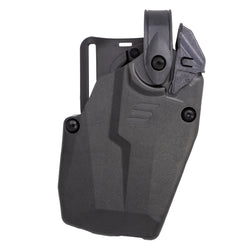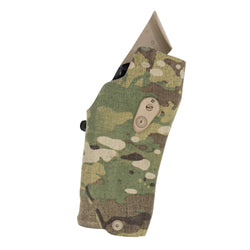Some people call it wear and tear; I call it character. I know there are some reading this who like to keep their equipment pristine, but sadly, their gear looks exactly like any other piece of clean gear.
Used gear simply looks better, and beyond looks, used gear feels better. Those “feels” are sometimes physical, and sometimes they are emotional when you feel connected to something well broken in.
This article is an homage to the gear you like to use and would likely fist-fight over if someone attempted to take it from you. Maybe that is a bit extreme, or maybe the ideas here will resonate with you because you feel the same way
Canteen Cup
My canteen cup is like a fingerprint. Putting it over a campfire has discolored the titanium finish, and there are some scratches to the metal from accidental tipovers and scraping residual food leftover when my cup doubled as a cooking vessel.

While you likely won’t clean the exterior all that much, you should definitely bring water to a boil inside the container to sterilize it on occasion.
I do not let anyone use my cup, and I’ve said your canteen cup is the most personal item you’ll carry into the field that lives with you. I look at my cup, and my mind goes to the countless campfires it has been around.
Boots
It’s hard to compare the sensation of slipping into a well-broken-in pair of boots to anything else.

Years ago, a common belief was to wear your boots into a creek and walk around in them wet to weld to your feet. These days, boots don’t break in like that anymore, and the only way to make them yours is to do it slowly and over time. Attempting to rapidly age your boots is almost like buying pre-ripped jeans.
Depending on the type of boots you have, there may even be the option for resoling. While not possible with every type of boot, a Norwegian welt style is capable of being resoled over and over.
Hat
I think everyone reading this has at least one hat that has seen better days. From cowboy hat to baseball cap to wide-brimmed sun hat to beanie, it’s hard to find a replacement for a well-broken-in hat. That’s how you know you’ve grown attached to it.

Unless you’re into custom hats, it is typically easy to source the same hat that you’ve lost. Despite this, when you put on that minty-fresh replacement, it never seems to fit like the old and you may even be reminded of the first time you put the original on your head years before.
You sweat in your hat, you use it to store your EDC essentials at night, you swat flies with it, and cover your eyes with it while flying. It’s not a bad idea to hand-wash your hat and keep it from the retired pile before it needs to be there. Hats are worth holding onto.
Firearm
No firearm-industry blog article should be without the mention of a firearm. Carry a pistol around long enough, and it is going to exhibit holster wear.
Granted, some firearm finishes are more durable than others, but even the toughest can’t withstand the combination of friction and debris. Eventually, high spots will look worn silver, and small scratches will eventually pull that once uniform, attractive finish from the surface of any firearm.
You’ve probably heard the expression “safe queen,” but firearms with the wear I’m describing are the furthest from any type of royalty. They’re hard-working and an honest representation of training.

I know I won’t consider a Glock well broken-in unless the inside of the slide starts to show where the hood of the barrel makes contact. We all know we should know the status of our firearms, and if we can’t say our firearms are broken-in, we really can’t say the status is fully functional. Even the priciest firearms deserve to be fed, cleaned, and lubricated. Use ‘em!
Vehicle
I just received a social media notification the other day of a memory from 10 years ago when I posted about replacing my Tacoma with my 4Runner. My vehicle is 10 years old and has 217,000 miles, which some would say is hardly broken in.
I’m a believer that a little goes a long way, and is related to vehicles, this means tire rotations, oil changes, wiper blade swaps, tire alignments, and listening to the advice of trusted mechanics who provide honest recommendations and solid work. I keep a maintenance log and all my service records in digital form and tucked in a folder behind my passenger seat to make sure I don’t miss anything.

My vehicle is far from pristine, and it has a few bumps and dings that are purely cosmetic. At this point, it is paid off, allows me to haul around my gear to courses, and it’s more asset than liability. My goal is to take that vehicle to 300,000 miles, which I should be able to do in the next 3-4 years.
I believe a vehicle becomes very personal, and it is a reflection of the driver. Mine is reliable, kitted out for possible and probable issues on the road, and it runs well.

Pack
I still have the receipt from 2001 when I purchased my Eagle Industries A-III pack, which was all the rage back then as the quintessential “three-day assault pack.”

I carried that pack everywhere for six years, and it started developing sweat rings on the Cordura and rust on the metal hardware.
I used it while guiding canoeing trips and took it to the top of Mt. Katahdin and some tall peaks in the east more than a few times. When you have a pack like that, or like its eventual replacement, it just feels right when you shoulder it and find the adjustments right where you left them.
A good pack is going to experience scratches, pulls to threads, exposure to animal blood (if you’re a hunter), stress from overpacking, and more. As rugged as packs can be, a little TLC goes a long way.
Nylon threading that is starting to pull can be snipped with scissors and burned flat with a lighter. Food residue should be cleaned out since squirrels and mice in camp don’t use zippers.
Just like climbing rope, keep your pack away from chemicals, direct sunlight, high heat from wood stoves, etc. Your pack will be your companion for many more miles, but you have to keep it in proper order.

Conclusion
Broken-in gear can only become broken-in if it can avoid getting broken in the process of being used. There is plenty of gear that has to be taken out of service from overuse, abuse, and lack of maintenance. To appreciate gear that shows character, you have to respect it from the start.

While this article may appear to be a gushing ode to equipment, it serves a stronger purpose. Don’t let your equipment become disposable, and treat it like there is no substitute or replacement.
Be a professional in all you do. Take care of your gear, it will take care of you. If you take care of it long enough, it will have that broken-in look and feel forged with countless memories.









